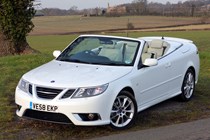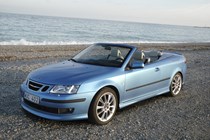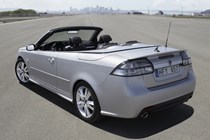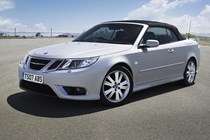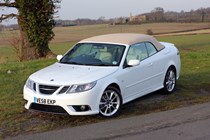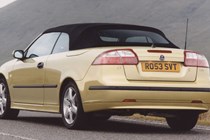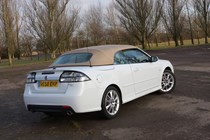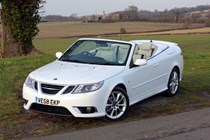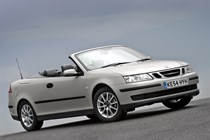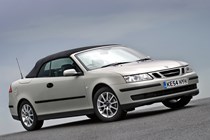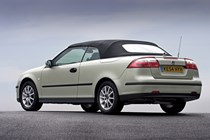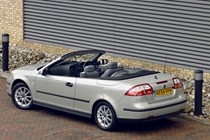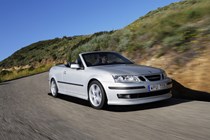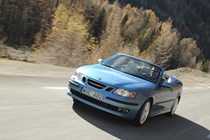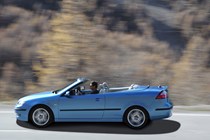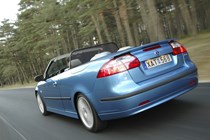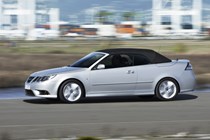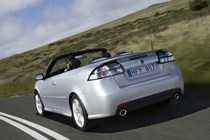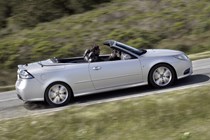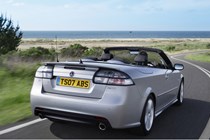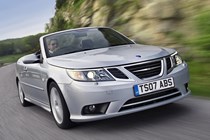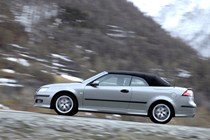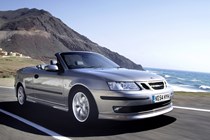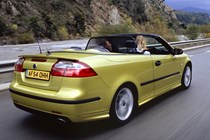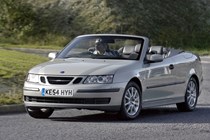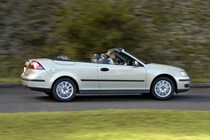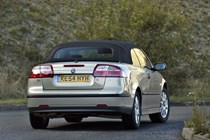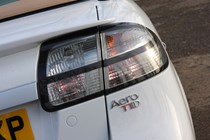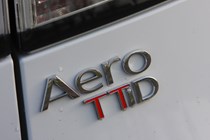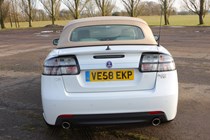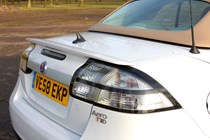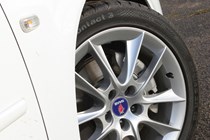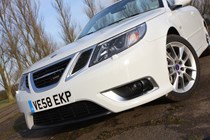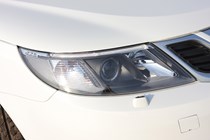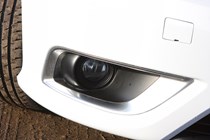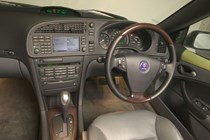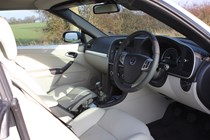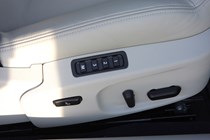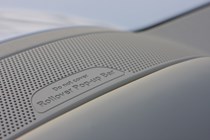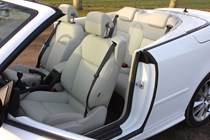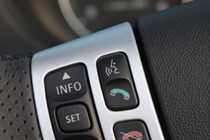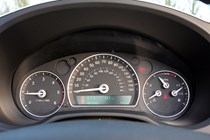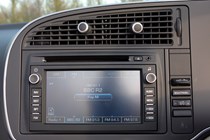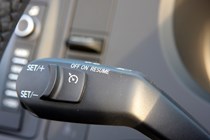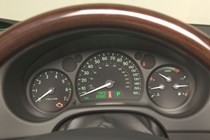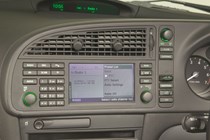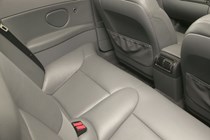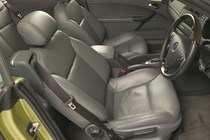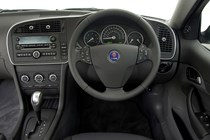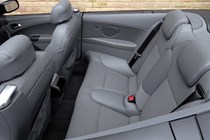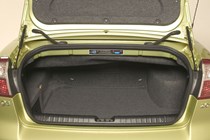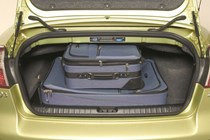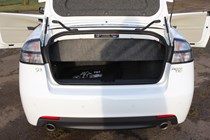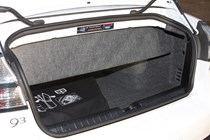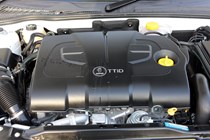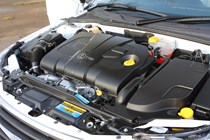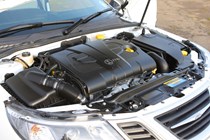
Saab 9-3 Convertible (2003-2011) engines, drive and performance
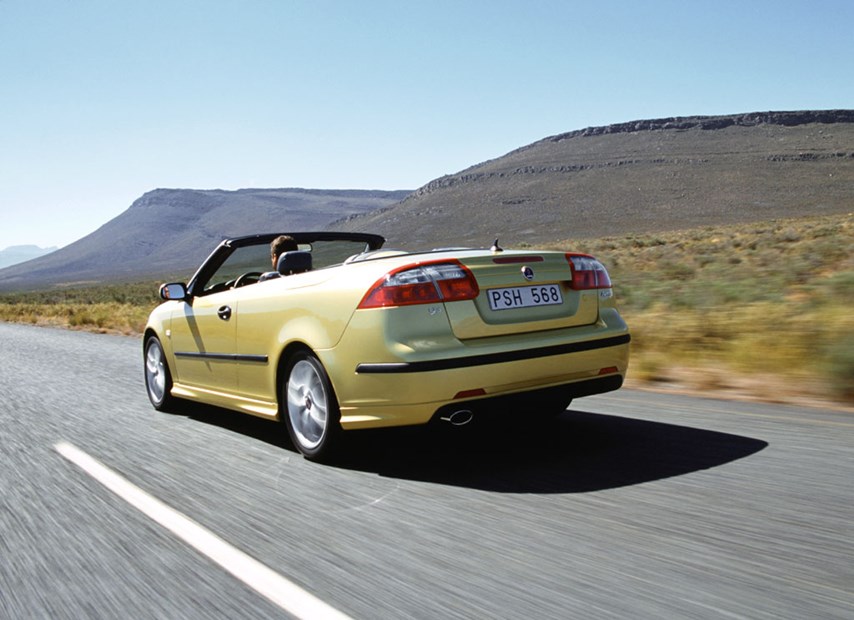
All the engines offered in the 9-3 Convertible range are turbocharged, giving good performance and making them enjoyable to drive. The entry-level engine is a 1.8-litre petrol with 150bhp that manages 0-62mph in 10 seconds while returning 36mpg. It may not sound that impressive, but it’s actually more than adequate for most and suits the 9-3 well. For more power there is a 2.0-litre which is available in two different powers of either 175bhp (badged 2.0t) or 210bhp (badged 2.0T).
The more powerful is very impressive indeed with a 0-62mph time of 7.7 seconds and great get-up-and-go from low down. Economy is a reasonable 35mpg too which makes the top of the range 2.8-litre V6 with 280bhp (introduced in 2006) seem a little pointless. True, it is quicker with a 0-62mph time of 7 seconds and it sounds great too, but it’s not as responsive as the smaller turbocharged engine and is far thirstier, averaging just 28mpg.
There are two good diesel choices – both 1.9-litre engines. The standard TiD version has 150bhp and a 0-62mph time of 10 seconds (identical to the 1.8t) while returning an impressive 48mpg. There is also a twin turbocharged model (badged TTiD) that produces 180bhp and can sprint from 0-62mph in just 8.7 seconds. It has masses of low down pulling power and feels very responsive – surprisingly it’s marginally more economical than the 150bhp version.
Both aren’t particularly noisy, although you’re always aware that you’re in a diesel. There are also two BioPower engines available (a 1.8t and a 2.0t) which can run on petrol and/or bioethanol E85. They offer more 25bhp more and better performance than the standard petrol equivalents, however bioethanol fuel is only available at a handful of filling stations in the UK.
Despite the lack of a roof, the body feels sturdy and resists the shake and flex that some convertibles suffer from. It is set up to be a relaxing, high-speed tourer rather than a sports car, but it offers decent grip in corners and can cope with being driven quickly over twisting roads when the occasion arises. If you choose a powerful engine and a manual gearbox the front wheels can struggle to put the power to the road especially in slippery conditions.
Exiting a wet roundabout will see the steering wheel pulling left and right in the driver’s hands and the traction control flashing on the dashboard.


